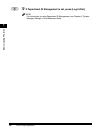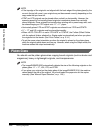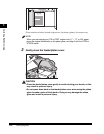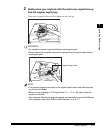
Placing Originals
1-12
Basic Copying Features
1
NOTE
•
If the top edge of the original is not aligned with the back edge of the platen glass (by the
arrow in the top left corner), your original may not be scanned correctly, depending on the
copy mode that you have set.
•
STMT and LTR originals can be placed either vertically or horizontally. However, the
scanning speed for horizontally placed originals is somewhat slower than vertically
placed originals. Place originals horizontally when printing with a preset copy ratio, such
as when enlarging an LTR original onto 11"
×
17" paper.
•
Horizontally placed LTR and STMT originals are referred to as LTRR and STMTR.
•
11"
×
17" and LGL originals must be placed horizontally.
•
When <AUTO COLLATE> is set to ‘COLLATE’ or ‘STAPLE’, the Collate (Offset Collate
with the optional finisher attached) or Staple mode is automatically set when you place
the originals into the feeder. (See “Auto Collate,” on p. 3-14.)
•
To get the same output orientation as when the original is placed on the platen glass,
place the original upside down and face up. However, when using the Staple mode, the
machine rotates the output automatically.
Platen Glass
You should use the platen glass when copying bound originals (such as books and
magazines), heavy or lightweight originals, and transparencies.
NOTE
•
The imageRUNNER 2020 automatically detects the size of the following originals on the
platen glass: 11"
×
17", LGL, LTR, and LTRR.
•
If you place your original on the platen glass of the imageRUNNER 2016, the machine
cannot detect the size of the original. You should select the paper size for the copies
manually. (See “Manual Paper Selection,” on p. 1-26.)


















